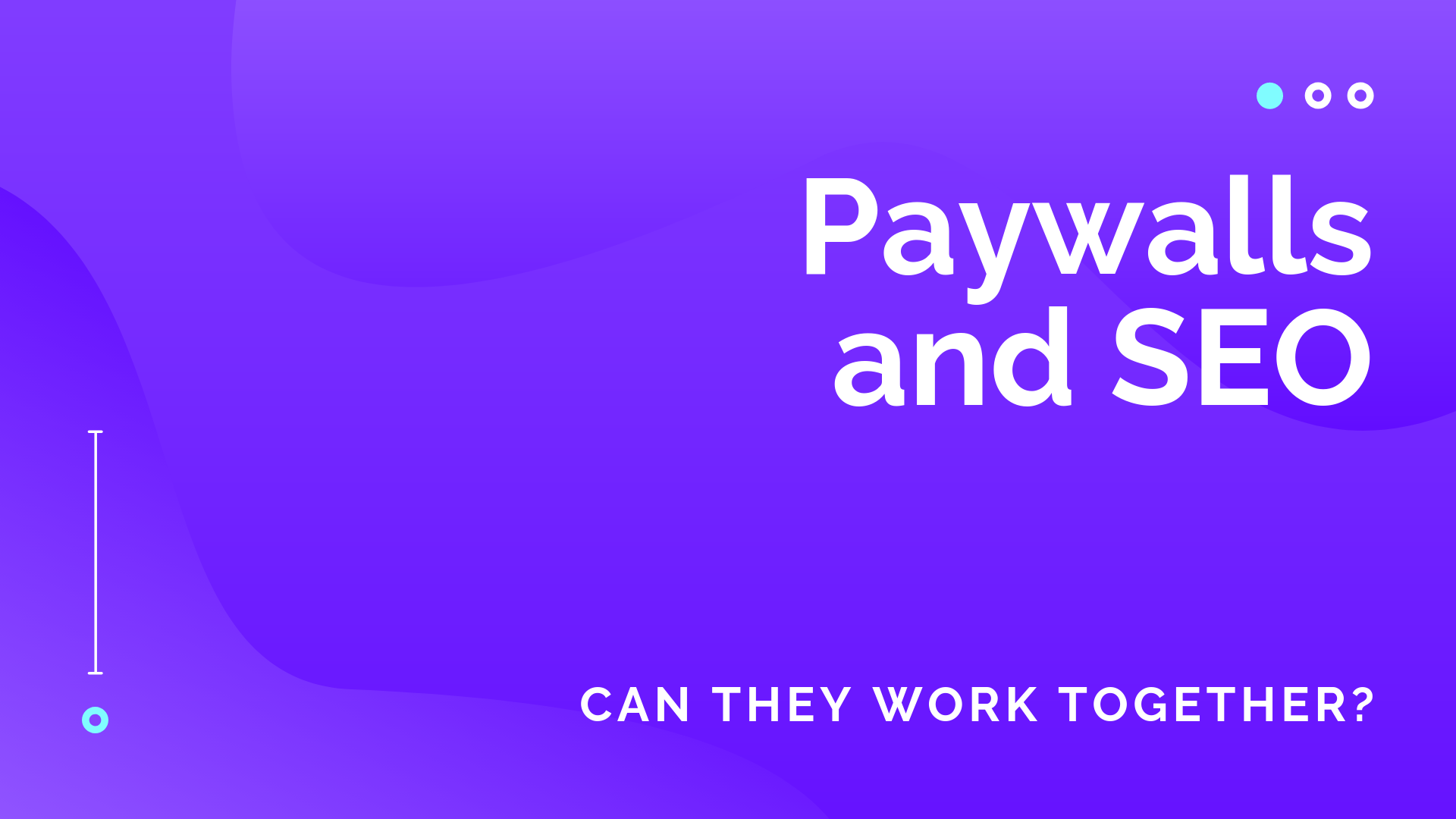
The perfect SEO strategy isn’t easy to design. To begin with, every business is different, and every business’ website is different. This means there simply isn’t a one-size-fits-all solution.
Despite that, SEO experts know that there are vital cornerstones. These are content, site architecture, and back-links, and these three foundations need to work together to form a sound strategy. These elements need to be prioritised for a very simple reason – Google likes them.
Google’s core updates value these cornerstones, so every good SEO strategy has to take them into account if it wants to push a page to the top of the search results, thus making it more accessible. It’s also widely accepted that everything Google values, it values in service of the user; that is, whoever is searching your keywords.
So what happens if you put something in the way of the user?
Paywalls
At first glance, putting a paywall between the readers and the content seems like a bad idea. After all, Google wants it to be easy for users to find what they’re looking for.
But the truth is, there are a few boons to putting a paywall in place:
- You can learn more about your audience
- Content that users do decide to pay for is likely to be considered of better value and more trustworthy.
- Customers who access your content are more likely to become repeat customers and make conversions.
The last point may be a little confusing, so let’s try putting it another way: a paywall effectively forces users to make a value judgement on your content. Those who decide to leave probably weren’t going to convert into clients or customers for you anyway. Those who stay, on the other hand, are now more likely to convert, since they’ve already committed to you.
On the other hand, let’s take a look at the common drawbacks of a paywall:
- Smaller overall userbase.
- It can be harder to earn links, as other sites may not wish to be branded as direct marketers for your paywall.
- Many users dismiss paywalls outright, finding them offensive.
These concerns seem to swing the scales back in favour of ‘no paywalls’ pretty substantially, so where do we go from here?
How Does Google Feel About Paywalls?
Google wants users to access information for free. This doesn’t necessarily mean paywalls are out completely, however.
At first, Google implemented a policy called FCF (First Click Free), which – as it sounds – stipulated that sites needed to make the first click into the content free.
This policy was then replaced in 2017 by flexible sampling. This policy allows sites to decide how much free content to give away before the paywall comes up, as long as it stays within Google’s guidelines.
There are multiple common approaches to this:
- Lead-in paywalls, which give you the opening of an article, but not the whole thing.
- Metered paywalls, which give you a few articles for free a month, before the paywall kicks in.
- Hard paywalls, which lock off everything from the outset.
Which Paywall Approach is Best?
Here’s where we refer back to the beginning of this article – there’s no one-size-fits-all. Ultimately, it comes down to what your content is, and what you intend for it to do.
Take a look at other sites. News outlets do well with metered paywalls. This gives people enough to keep reading for a while and get used to the quality of content they write until, eventually, the user decides it’s worth it.
The New York Times is roughly eight years into its paywall, and despite many still reporting that the platform is dying, it has around 4.3 million subscribers and made $709 million in digital revenue last year. Both of these stats put them on track to achieve their extremely ambitious goals of $800M in digital revenue by 2020 and 10 million digital subscribers by 2025.
Many other sites do well with lead-in paywalls too. More technical blogs tend to go with the lead-in, because it allows them to set up a hypothesis before the cut, and tell users that the answer is just beyond.
The last type – hard paywalls – aren’t a great idea. A hard paywall often doesn’t allow Google to crawl your site, making it a poor choice for SEO purposes.
So what can you do?
Find A Paywall Balance
Often, the best way to deal with the complicated problem is to change the rules. This is no different. Rather than deciding between using a paywall on your content or not, just don’t choose – do both!
If you have a clear distinction between free and premium content, you’re getting the best of both worlds. Google will be able to reference your free content in organic results, and take note that your premium content is worth driving users to as a highly authoritative source.
On the other hand, some blogs are already set up well for entirely premium content if they provide something no one else can. Content is easy to justify as exclusive if it’s unique.
Ready to Decide?
Putting your content behind a paywall can be a tough call to make. There are the factors above to consider, along with a whole host of much more technical factors we haven’t covered.
Putting those concerns aside, you will probably have a feeling one way or another if you ask yourself a few simple questions. Would a paywall be valuable to users? Can users find the same content somewhere else, for free?
If you do decide to develop a paywall, be aware that you’re signing up for a tradeoff. Your userbase may shrink, but those who stay will likely be all the more loyal to you and your brand. It’s all a matter of priorities.
After all, every business is different, and SEO exists to find the unique solution for each and every one.

















